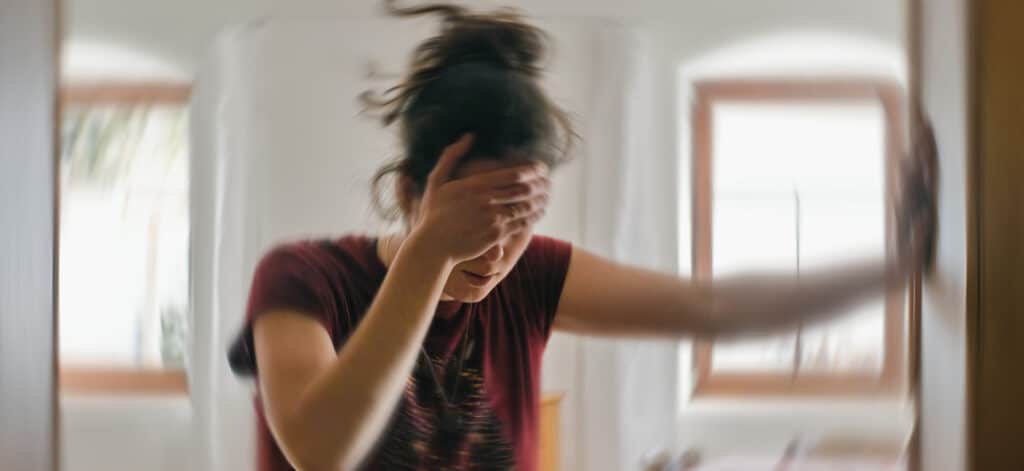Medically Reviewed and Written By: Kathleen O’Shea Northrup, MD
Stroke is the number one cause of adult disability in the United States and the 5th leading cause of death. Because it affects the brain, sometimes people who are having a stroke don’t even realize that something is wrong. This makes it even more important to be able to recognize the signs and symptoms of stroke in others. It is critical that strokes are diagnosed and treated early.
Knowing what a stroke is will help you to identify when someone is having one.
What is a stroke?
A stroke- sometimes referred to as a “brain attack”- is what happens when blood flow to the brain is interrupted. This can happen in one of two ways. There can be a blockage in one of the arteries that brings blood to the brain (known as an “ischemic stroke”) or there can be bleeding in the brain, such as from a ruptured aneurysm or trauma (known as a “hemorrhagic stroke”). Both types of stroke are medical emergencies and require immediate attention. Depending on what part of the brain is affected, a patient might have different symptoms ranging from mild to severe.
What are some of the symptoms of a stroke?
Some of the symptoms that patients may experience include:
- Difficulty speaking- words could come out garbled, or slurred. Or the person might not be able to get any words out at all!
- Difficulty moving- there might be weakness of an arm and/or leg on one side of the body. Or, you might notice that the person is having trouble walking and is leaning to one side or the other when they try to walk.
- Numbness or tingling- the person might have numbness or tingling of their face, arm, or leg.
- Facial droop- there may be drooping of one side of the person’s face. When you ask them to smile, only one side of their mouth will go up.
- Confusion- the person might seem confused or not be able to do things they could do before. They might think the TV remote control is their telephone or have trouble writing a check.
- Headache- some people might have a sudden severe headache with their symptoms
- Dizziness- there may be severe dizziness, with or without nausea and vomiting
- Vision changes- there may be a sudden change in vision or loss of vision in one or both eyes
What is an easy way to remember signs of a stroke?
One of the best ways to remember the signs of a stroke is to think of the word “FAST”. This stands for Face, Arm, Speech, and Time.
Face: Have a person try to smile- if one side of their face doesn’t go up, this could be a sign of a stroke.
Arm: Have them hold both arms straight out in front of them. If one arm drifts down, or they can’t lift it at all, that could be a sign of a stroke.
Speech: Listen to their speech- is it clear, or garbled? Are they having trouble speaking? This could also be a sign of a stroke.
Time: Finally, time is very important. If you think someone is having a stroke, call 9-1-1 immediately. Every second counts when someone is having a stroke, and paramedics can get your loved one to treatment right away. Don’t wait to see if the symptoms improve- fast treatment can lessen the brain damage that a stroke can cause.
Act FAST! Call 9-1-1. Try to remember the exact time the person you think is having a stroke last seemed fine. This can help doctors to know what type of treatment they need.
What if the symptoms go away after a few minutes?
It is still important to seek medical care, as this could be a sign of a TIA (transient ischemic attack), or “mini-stroke”. This is a warning sign of a stroke, and needs to be seen immediately. Nearly 1 in 5 people who have a TIA will have a stroke within 90 days! So if you or someone you know has stroke-like symptoms, as noted above, but they resolve in 5 minutes, emergency care is still needed. Unfortunately, because TIAs can be so brief, many people ignore them- which puts them at very high risk for having a stroke soon!
Who can have a stroke or TIA?
Anyone can have a stroke at any age. Although it is most common in older adults, many people younger than 65 can also have strokes. In fact, for every 7 strokes that occur, one of them will be in someone between the ages of 15 and 49. So whether you are young or old, knowing how to spot a stroke could save your life or the life of someone you know.
Learn more about healthy living
Check out patientslikeme.com/groups/healthy_living/overview to join our discussion. You can share what you are going through, ask for advice, and plan a path forward from people who understand.

